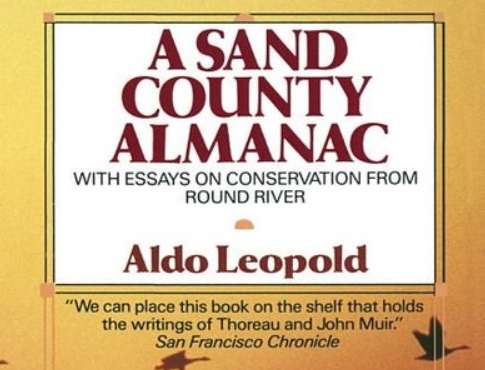
Friend of Save the Sound, Patrick Paul Barrett, read books with environmental themes over the summer and is sharing his reviews in this blog series to help you curate your reading list!
Book Review 2: A Sand County Almanac by Aldo Leopold
Aldo Leopold’s A Sand County Almanac (1949) is a frustrating book to review. It is not a bad book, but I cannot say that I enjoyed it. The book is considered a key text of environmental writing, but it appears to have been written for a more hard-core nature lover audience. Also, given the the author died one year before the book was published, he might have polished a bit more had he lived.
A Sand County Almanac is divided into three parts. The first part, the titular almanac was, for me, the best part of the book. It is a twelve-month journal about the activities and wildlife on the sand farm Leopold and his family inhabited. This is where his writing soars the highest. In particular, the passage where he describes cutting up an oak struck by lightning for firewood is worth getting the book for. Sadly, it is a consistency not easily maintained.
Part two, “Sketches Here and There” describes Leopold’s travels and experience with vanishing wilderness. Like the first part, these sketches are poetically written and succeeded in invoking emotion, even if one is not a nature lover. But the problem is that in outline, the sketches do not vary much, and as a result, reading them all becomes tedious, and I begin to think, OK, I get the point, show me something new!
The final part, “The Upshot,” starts to regain some of the groove lost in part two with a series of essays on conservation and conservation practices, but even here, it’s clear some editing is needed. At best, the essays convey a sense of urgency, but get bogged down by a lot of terminology that will be lost on the average reader.
A Sand County Almanac is, overall, a book I respected and admired rather than liked.
Recommended for: hard-core nature lovers and environmentalists
Previous Post:
Book Review 1: The One-Straw Revolution by Masanobu Fukuoka
